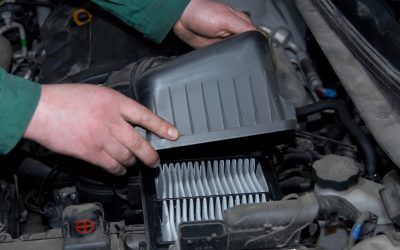Off-roading can be an exciting adventure, whether you’re exploring Arizona’s rugged desert terrain or navigating rocky trails in a 4WD vehicle. However, the thrill of off-road driving can come with hidden consequences for your vehicle—especially your suspension system. Even if the ride feels fine at first, issues can develop over time and impact safety, performance, and comfort.
If you’ve recently returned from an off-road excursion, it’s important to inspect your vehicle for signs of wear.
What the Suspension System Does
Your vehicle’s suspension system is responsible for absorbing shocks from the road, maintaining tire contact, and supporting vehicle stability. It includes components like:
- Shock absorbers and struts
- Springs (coil or leaf)
- Control arms
- Ball joints and bushings
- Sway bars and linkages
On off-road terrain, these components work harder than usual to manage uneven surfaces, sudden jolts, and shifting vehicle weight. Without proper care, this can lead to early wear or even mechanical failure.
Why Off-Road Driving Puts Extra Stress on Suspension
While standard road conditions involve relatively predictable bumps and turns, off-road environments present unpredictable obstacles like:
- Rocks and potholes
- Deep ruts and divots
- Sharp inclines and declines
- Uneven or soft surfaces
Every bounce, jolt, and dip adds strain to your vehicle’s suspension system. Over time, these forces can lead to damaged shocks, bent control arms, misaligned wheels, and worn-out bushings. Even if you don’t notice a problem right away, these effects may become apparent in the weeks following a rough trail ride.
Common Signs of Suspension Damage
Recognizing early warning signs is key to preventing more serious damage. After off-road driving, look for the following symptoms that may indicate the need for car suspension repair:
1. Uneven Tire Wear
If your suspension system isn’t holding the wheels at the correct angle, it can cause uneven or rapid tire wear. This may appear as feathering, cupping, or excessive wear on one side.
2. Rough or Bouncy Ride
A damaged shock or strut will fail to absorb bumps properly, causing the vehicle to bounce excessively over even small imperfections in the road.
3. Drifting or Pulling While Driving
If the vehicle pulls to one side, it could mean a damaged suspension component or alignment issue. This can also affect steering control and tire lifespan.
4. Nose Dives or Rear End Squats
During braking or acceleration, if your vehicle dramatically dips forward or squats backward, the shocks may be failing to control weight transfer properly.
5. Clunking or Creaking Sounds
Strange noises when turning or driving over bumps often point to worn or broken suspension parts like bushings, ball joints, or control arms.
6. Visible Damage or Leaks
If you notice fluid leaking from the shocks or bent components under the car, it’s time for immediate inspection and repair.
What to Expect from an Auto Suspension Service
A full auto suspension service includes more than just a visual inspection. Professional technicians use tools and diagnostic equipment to evaluate the system and identify components that are worn, bent, or leaking. Here’s what a typical service may involve:
- Road test to assess ride quality and handling
- Suspension component inspection (shocks, struts, springs, control arms)
- Evaluation of steering and alignment
- Tire and wheel inspection
- Bushing and joint wear check
- Replacement of worn or damaged parts
- Realignment if needed
Even if there’s no immediate damage, periodic suspension checks after off-road use can help extend the life of your components and ensure safe driving on highways and city roads.
How Often Should Suspension Be Inspected?
While suspension systems don’t require frequent service like oil changes, they should be inspected at least every 15,000 to 30,000 miles, or sooner if you frequently drive in extreme conditions—like off-roading, towing, or navigating poorly maintained roads.
Following an off-road trip, it’s smart to perform a basic check or schedule a professional inspection—especially if you notice unusual handling or tire wear.
Preventive Tips for Off-Road Drivers
To help protect your suspension system before and after off-road driving, consider these tips:
- Inspect your vehicle before and after each off-road trip
- Clean the undercarriage to remove dirt and debris that can affect joints and seals
- Avoid sudden drops or impacts when navigating off-road trails
- Use proper tire pressure to absorb shock and support load distribution
- Schedule service promptly if you detect any of the warning signs mentioned above
Keeping a close eye on your vehicle’s performance will help you catch issues early and reduce the need for costly repairs.
Final Thoughts: Don’t Ignore Suspension Warning Signs
Off-road driving adds excitement and versatility to your vehicle, but it also demands more from your suspension system. Left unchecked, minor damage can evolve into serious safety concerns, affecting your ability to steer, stop, and maintain control.
By staying aware of common symptoms and scheduling professional evaluations when needed, you’ll keep your vehicle running safely and smoothly. If you’re experiencing issues after an off-road adventure, a trusted automotive repair shop can assess the condition of your suspension system and recommend the right course of action.
Whether it’s a simple bushing replacement or a more complex repair, timely service helps you protect your investment—and stay ready for the next road or trail ahead.







